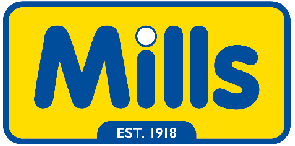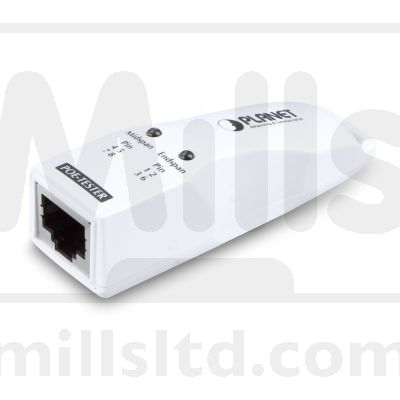Planet POE-TESTER 802.3af/at PoE Tester
Planet PoE-TESTER is an easy-to-use PoE diagnostic adapter for network installers, company MIS and even home users to quickly identify the existence of Power over Ethernet on applications network. It is designed to detect if the IEEE 802.3af/at PoE voltage runs over the UTP cable and identify the type of PSE (Power Source Equipment) for troubleshooting.
Plug and Show LED Indicators
Simply connect the POE-TESTER to the PSE or the RJ-45 outlet and the LED will light up when it detects the PoE voltage via the UTP cable and identifies the PSE to be mid-span, end-span, or even the latest 4-pair 60-watt ultra PoE in a second.
Identify PoE PSE Modes
The POE-TESTER provides two LEDs for quick and easy PSE mode identification. A Power over Ethernet system comprises a PSE (Power Sourcing Equipment) and a PD (Powered Device). The PSE is a device that will provide power in a PoE setup. There are two types of PSE, Mode A and Mode B. The PSE may either be a Mode A, end-span PoE switch or a Mode B, mid-span PoE injector.
The PD is a PoE-enabled terminal by PSE and thus consumes energy, such as IP network cameras, VoIP phones and wireless access points and more.
PoE Installation Troubleshooting
Although PDs that implement only Mode A with end-span or Mode B with mid-span are disallowed by the IEEE 802.3af/at standard, there are still some of the PDs that are designed to work with only one of the modes. Thus, it will cause the PoE PSE and PD not to be compatible with each other in the applications. For example, an end-span designed PoE switch cannot power on the remote mid-span only wireless access point. But most of the time, the installers would not exactly know what the remote PSE devices are. PLANET POE-TESTER checks your UTP cable for power and identifies its source, mid-span or end-span. Make sure at the end of UTP cable there is existence of PoE, and then the next step is to check if the PD is compatible with the PSE, or it is a malfunctioned PD.
Planet PoE-TESTER is an easy-to-use PoE diagnostic adapter for network installers, company MIS and even home users to quickly identify the existence of Power over Ethernet on applications network. It is designed to detect if the IEEE 802.3af/at PoE voltage runs over the UTP cable and identify the type of PSE (Power Source Equipment) for troubleshooting.
Plug and Show LED Indicators
Simply connect the POE-TESTER to the PSE or the RJ-45 outlet and the LED will light up when it detects the PoE voltage via the UTP cable and identifies the PSE to be mid-span, end-span, or even the latest 4-pair 60-watt ultra PoE in a second.
Identify PoE PSE Modes
The POE-TESTER provides two LEDs for quick and easy PSE mode identification. A Power over Ethernet system comprises a PSE (Power Sourcing Equipment) and a PD (Powered Device). The PSE is a device that will provide power in a PoE setup. There are two types of PSE, Mode A and Mode B. The PSE may either be a Mode A, end-span PoE switch or a Mode B, mid-span PoE injector.
The PD is a PoE-enabled terminal by PSE and thus consumes energy, such as IP network cameras, VoIP phones and wireless access points and more.
PoE Installation Troubleshooting
Although PDs that implement only Mode A with end-span or Mode B with mid-span are disallowed by the IEEE 802.3af/at standard, there are still some of the PDs that are designed to work with only one of the modes. Thus, it will cause the PoE PSE and PD not to be compatible with each other in the applications. For example, an end-span designed PoE switch cannot power on the remote mid-span only wireless access point. But most of the time, the installers would not exactly know what the remote PSE devices are. PLANET POE-TESTER checks your UTP cable for power and identifies its source, mid-span or end-span. Make sure at the end of UTP cable there is existence of PoE, and then the next step is to check if the PD is compatible with the PSE, or it is a malfunctioned PD.
| Yes |
To see our delivery charges, please click here
To see our terms regarding returns, please click here



